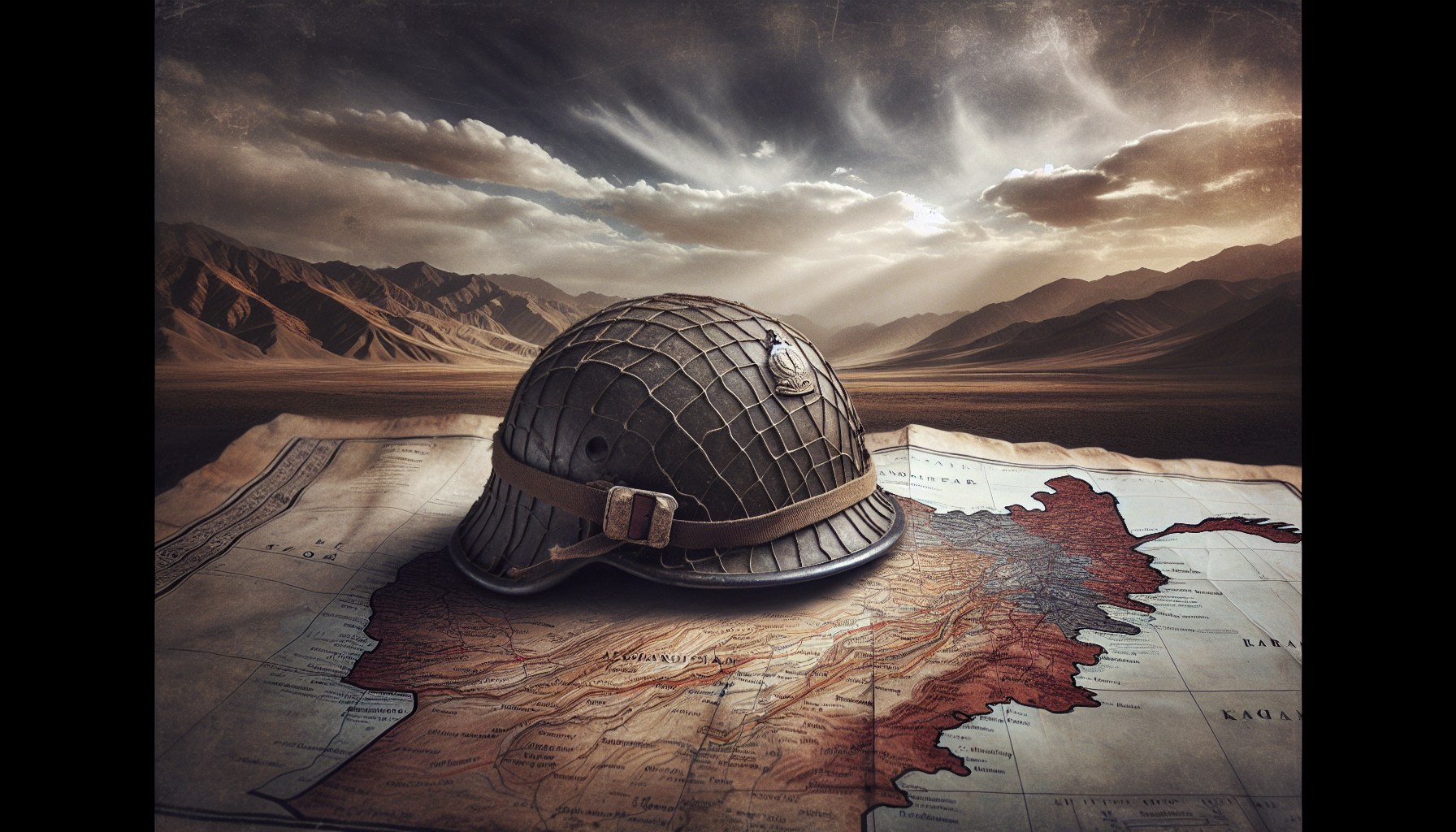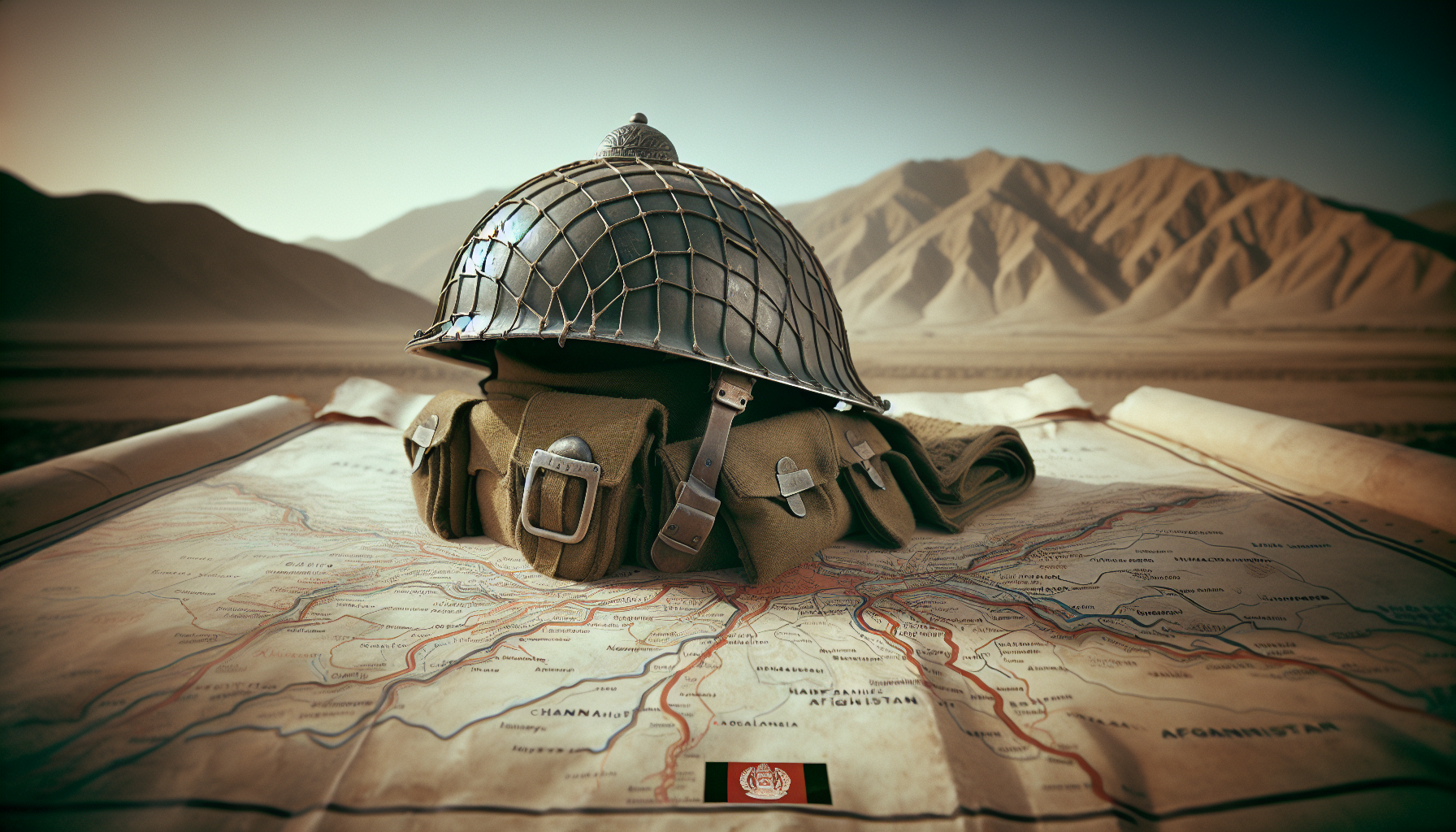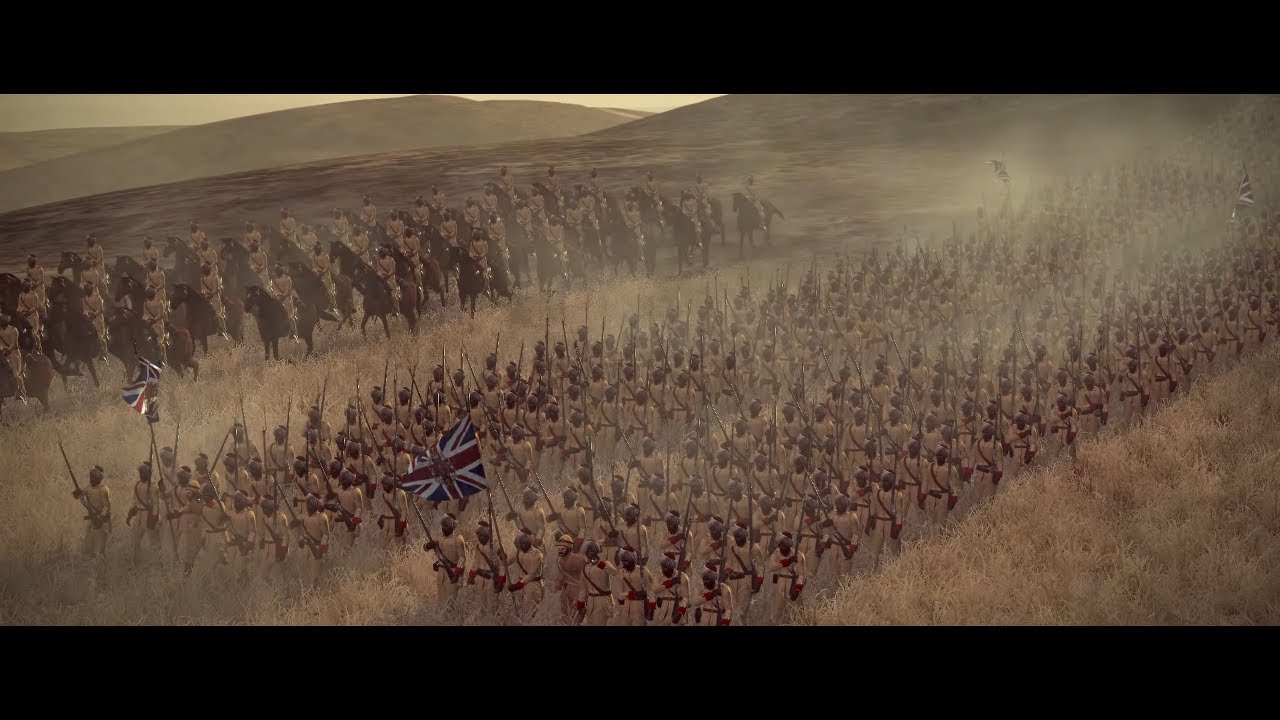The Battle of Kandahar, fought on September 1, 1880, stands as a pivotal moment in the history of the Second Anglo-Afghan War. This significant engagement followed the British defeat at Maiwand, where Ayub Khan, an Afghan leader, besieged British forces in Kandahar. In a bold response, General Frederick Roberts led a relief force of 10,000 troops across a grueling 320-mile march from Kabul. The ensuing clash illuminated the British military’s tactical prowess despite facing a numerically superior but disorganized Afghan army, ultimately resulting in a decisive victory.
This article meticulously examines the factors leading up to the battle, including the defense and siege of Kandahar, the British counterattack, and the implications of the aftermath on British foreign policy in the region. By analyzing the intricacies of military strategy and the interplay of leadership, you will gain insights into the complexities of colonial warfare and its lasting legacy in Afghanistan. The outcome not only restored British prestige but also ushered in a more cautious approach in subsequent engagements, forever altering the nature of British interaction with Afghan tribes.
Historical Context of the British Empire

Expansion of the British Empire in the 19th Century
During the 19th century, the British Empire expanded at a staggering pace, establishing itself as the preeminent global power. The empire, fueled by industrial growth and a desire for economic expansion, facilitated the colonization of vast territories across Asia, Africa, and the Americas. You should consider that this was not merely an extension of geography; it represented an ideology underpinned by notions of superiority, civilization, and the civilizing mission of the British. This context created a complex relationship with local populations, often leading to confrontations that shaped colonial policies.
The British fascination with India—often referred to as the “jewel in the crown” of the empire—exemplified this imperial ambition. However, to protect trade routes to India, the strategic significance of Afghanistan became apparent. Afghanistan’s geographical position made it a linchpin in the broader context of British imperial interests, particularly as the empire sought to counteract Russian expansion in Central Asia, often framed as the “Great Game.”
Geopolitical Significance of Afghanistan
Given its location bordering British India, Afghanistan served as both a buffer and a zone of influence during a period characterized by competing imperial interests. You must recognize that the British viewed Afghanistan as crucial to preventing Russian encroachment into the Indian subcontinent. Simultaneously, Afghanistan’s strategic importance made it a target for various external powers who sought to establish a foothold in the region. As a result, the Afghan territory was more than just land; it was a symbolic battleground representing larger geopolitical maneuvers.
You should also note that Afghanistan’s tribal society, marked by fragmented loyalties and a diverse array of ethnic identities, posed a significant challenge for any external influence. The rugged terrains and fierce independence of its people further complicated efforts to impose foreign control. Your understanding of this historical tapestry is essential to grasp the subsequent conflicts that transpired.
Previous Conflicts with Afghan Tribes
Before the Second Anglo-Afghan War, the British encountered fierce resistance from Afghan tribes during the First Anglo-Afghan War (1839–1842). The disastrous outcome of this initial conflict, where British forces faced not only military defeat but also a total collapse of morale, would cast a long shadow over subsequent British engagements in the region. The brutal lessons learned during this earlier war, including the critical importance of understanding local dynamics and the fierce resistance from Afghan tribes, were largely ignored by British authorities in the lead-up to the Second Anglo-Afghan War.
You are encouraged to consider how the legacy of these conflicts informed British military strategy and political ideology. The embedded penchant for imperialism mixed with a deep-seated misunderstanding of the Afghan tribes led to a series of costly miscalculations—elements that defined the Second Anglo-Afghan War.
The Second Anglo-Afghan War
Causes of the Second Anglo-Afghan War
The causes leading to the Second Anglo-Afghan War were multifaceted, emanating from the earlier failures of the British Empire in Afghanistan and the wider geopolitical landscape. Tensions escalated when Amir Sher Ali Khan sought to balance the influences of Britain and Russia, asserting his sovereignty by establishing diplomatic relations with Russia—an act perceived as a threat by British authorities. The subsequent British desire to control Afghan foreign policy reflected an imperial mindset that prioritized dominance over partnership.
You should analyze how perceptions of Afghan sovereignty clashed with British ambitions, as local resistance fighters began to organize against what they saw as foreign interference. The growing sentiment of nationalism among Afghan tribes sought to revive their historical autonomy, setting the stage for conflict.
Key Players in the Conflict
Prominent figures in the Second Anglo-Afghan War included General Frederick Roberts, who would later orchestrate the pivotal relief force to Kandahar, and Ayub Khan, the Afghan leader determined to resist British encroachment. Your consideration of these key players is critical, as their decisions and actions significantly influenced the narrative surrounding the conflict. Ayub Khan’s military acumen and deep-rooted support among Afghan tribes rendered him a formidable adversary, while Roberts’s reputation and leadership would eventually challenge the tides in favor of British interests.
Timeline of Major Events Leading to Kandahar
The timeline leading up to the Battle of Kandahar is marked by pivotal moments: from the disastrous British defeat at Maiwand in July 1880, which left the Kandahar garrison in dire straits, to the strategic mobilization under General Roberts. Your attention to the chronology not only highlights military maneuverings but also illustrates the high-stakes decisions taken by British commanders, which would eventually culminate in the siege of Kandahar.
Ayub Khan and His Forces
Background of Ayub Khan’s Leadership
Ayub Khan emerged as a national hero among Afghan tribes, melding traditional leadership with a modern military strategy. Trained by the complexities of foreign intrigue and conflict, Ayub Khan presented himself as a defender of Afghan autonomy. Your understanding of his leadership style is essential, as it allowed him to galvanize disparate tribal factions into a cohesive fighting force. His charisma and tactical intelligence rallied soldiers around a common goal: to expel foreign forces from Afghanistan.
Composition and Strategies of Afghan Forces
The Afghan forces, composed predominantly of tribal elements, displayed a remarkable ability to adapt to the British military’s tactics. You should consider how their intimate knowledge of the rugged terrain, combined with divergent tribal loyalties, allowed them to develop effective guerrilla strategies. The Afghans leveraged mobility, strategic ambushes, and local networks for supplies and intelligence, elements that complicated British operations throughout the war.
The Impact of Local Support for Ayub Khan
Ayub Khan’s ability to gain local support was a testament to his promise of restoring Afghan pride and sovereignty. This support derived from a collective memory of resistance against foreign dominion, bolstering his military efforts with the populace’s backing. You should take into account how this local support not only provided strength to his forces but also created logistical advantages, making it more difficult for the British to quell the uprising.
The Siege of Kandahar
Initial Situation of British Forces in Kandahar
The British forces in Kandahar faced a precarious situation after the demoralizing defeat at Maiwand. Maintaining a garrison in Kandahar became a challenge as supply lines were compromised and morale plummeted. You must note that British forces, numbering around 2,000, became encircled and besieged by Ayub Khan’s larger army. This dire predicament shaped the narrative of the engagement, emphasizing the resilience and eventual determination of the British to relieve their beleaguered comrades.
Tactics Employed by Ayub Khan During the Siege
Ayub Khan’s tactical approach during the siege capitalized on encirclement, creating a stranglehold on the British garrison. He meticulously organized his troops to maintain pressure, employing sharpshooters and artillery fire to disrupt British supply lines. Your understanding of these strategies highlights how asymmetrical warfare allowed a numerically inferior force to challenge a traditional military structure, an element crucial to analyzing modern conflict.
Living Conditions and Morale of British Troops
The living conditions for British troops during the siege were grim. You are encouraged to delve into the psychological and physical ailments faced by the troops, who endured shortages of food, ammunition, and medical supplies under constant bombardment. Their morale deteriorated as the prospect of relief seemed remote, ultimately leading to a fervent hope that only intensified when news of General Roberts’s advance became known.
General Frederick Roberts

Roberts’ Background and Military Experience
General Frederick Roberts emerged as a key figure in the British military, especially after the grievous failures experienced during the First Anglo-Afghan War. His military career was marked by various campaigns across India, equipping him with insights into the complexities of warfare in varied terrains. You should consider how Roberts’s comprehensive understanding of local cultures and geopolitical nuances shaped his approach during the Second Anglo-Afghan War.
Decision-Making During the Crisis in Kandahar
Roberts’s ability to make rapid decisions under pressure was pivotal during the crisis. Faced with the knowledge that Kandahar was on the brink of collapse, he devised a plan for a rapid relief force to traverse the challenging landscape. Your engagement with his strategic foresight emphasizes the importance of effective leadership in turning the tide of a seemingly lost cause.
Leadership Style and Its Impact on Troops
The leadership style of General Roberts was characterized by a blend of empathy and tactical acumen. He was known for fostering camaraderie among his troops, an approach that inspired confidence and commitment even in the direst circumstances. You should reflect on how his ability to communicate effectively with his soldiers not only bolstered morale but also enhanced operational effectiveness when preparing for the ultimate battle at Kandahar.
The British Relief Force
Composition and Organization of Roberts’ Forces
The composition of Roberts’s relief force consisted of approximately 10,000 troops, strategically selected to ensure a balance of infantry, cavalry, and artillery. You need to recognize that this organization was designed to provide tactical flexibility, as each division complemented the others in both offensive and defensive operations. The careful selection of troops displayed Roberts’s understanding of the challenges posed by Afghanistan’s varied topography.
The 320-Mile March from Kabul
The 320-mile march undertaken by Roberts’s forces from Kabul to Kandahar was a formidable military undertaking. The swift march, achieved in less than three weeks, showcased the discipline and capability of British troops. You should appreciate the logistical challenges involved, including terrain difficulties, the risk of ambush, and the need for constant resupply. This march not only displayed military prowess but also emphasized the importance of speed in modern warfare.
Challenges Faced En Route to Kandahar
Roberts’s forces faced numerous challenges along the journey, including supply shortages, harsh weather conditions, and ongoing skirmishes with Afghan forces. You must recognize that these elements tested both the physical endurance and morale of the troops, illustrating the harsh realities of campaigning in unfamiliar territories. The resilience demonstrated during this march ingrained a sense of purpose that would prove important for the impending confrontation at Kandahar.
Planning and Preparation for Battle

Strategic Assessments Before Engagement
Before engaging Ayub Khan’s forces, extensive strategic assessments were conducted. Roberts’s insistence on obtaining accurate intelligence influenced tactical planning, allowing his commanders to craft an effective offensive strategy. You should consider how this foresight differentiated the British approach from earlier engagements in the war, where poorly informed decisions had catastrophic consequences.
Coordination of Artillery and Infantry Units
Roberts emphasized the need for coordination between artillery and infantry units during the offensive preparations. The integration of these branches was critical for maximizing firepower and minimizing vulnerability during confrontation. Your analysis should reflect on how this tactical nuance was essential to the success of the British forces in countering Ayub Khan’s larger but less organized army.
Logistical Preparations for the Offensive
The logistical preparations undertaken prior to the battle involved meticulous planning for ammunition supplies, medical support, and communication channels among units. You must recognize that these preparations underpinned the operational effectiveness of Roberts’s forces, reflecting a shift in British military strategy centered around increasing efficacy through comprehensive logistical support.
The Battle of Kandahar
Initial Confrontations and Tactics Used by Both Sides
The Battle of Kandahar commenced with initial confrontations marked by tactical maneuverings from both sides. Ayub Khan attempted to leverage his numerical superiority by employing hit-and-run tactics, which British troops faced with disciplined volleys of rifle fire and coordinated artillery strikes. You should note the innovation shown by Roberts’s troops, who effectively employed entrenched positions for defensive strength while executing counteroffensives.
The Pivotal Moments in the Battle
Pivotal moments during the battle developed as British forces executed strategic assaults on critical points within the Afghan encampment. Recognizing opportunities to exploit vulnerabilities in Ayub Khan’s defenses, the British forces’s tactical decisions proved decisive. Your engagement with these moments reveals a broader narrative about adaptability and foresight in warfare, elements crucial for succeeding in complex battlefields.
Artillery Dominance and Its Impact on the Outcome
The British artillery’s dominance played a critical role in determining the outcome of the battle. Roberts’s forces utilized modern artillery capabilities to devastating effect, enabling them to disrupt Afghan formations before they could organize a coherent defense. You should appreciate how the advancements in technology and tactical deployment were fundamental in shifting the balance in favor of the British, ultimately leading to a rout of Ayub Khan’s troops.
Outcome and Aftermath of the Battle
Casualties and Losses on Both Sides
The aftermath of the Battle of Kandahar revealed significant casualties on both sides. The British reported around 1,500 casualties, a figure significantly higher than the estimated losses on the Afghan side. You must consider the implications of these losses on perceptions of military efficiency and competence within the British Army, especially following the earlier defeats that marred their reputation.
Immediate Effects on British Military Reputation
Victory at Kandahar restored British military prestige and reaffirmed their dominance in Afghanistan for a brief period. However, you should note that this success also prompted a reevaluation of British colonial policies. The initial fervor for imperial expansion was tempered by an understanding of the complexities associated with maintaining control in territories characterized by deep-rooted cultural identities.
The Fate of Ayub Khan and Afghan Leadership Dynamics
Following the battle, Ayub Khan faced significant consequences. Though he fled, his resilience earned him enduring respect among Afghan people, complicating the British endeavor to establish a stable government. Your recognition of the dynamics at play among Afghan leaders post-war underscores the challenges faced by the British in navigating local governance, ultimately leading to the rise of Abdur Rahman Khan as a pro-British leader but one still ensconced in Afghan nationalist sentiment.
Conclusion
Summary of the Key Themes Uncovered
In summary, the Battle of Kandahar represents a tapestry of strategic military thought, cultural clashes, and the profound impacts of colonialism on local dynamics. Through examining the various facets of the conflict, you uncover themes surrounding leadership, the effectiveness of military strategies, and the intrinsic complexities of managing imperial aspirations in Afghanistan.
The Significance of the Battle of Kandahar in Military History
The Battle of Kandahar stands as a significant marker in military history, not merely as an event but as a lesson in the evolving understandings of colonial warfare and the complexities inherent in exerting control over diverse societies. You should reflect on how this battle highlighted the limitations of conventional military strategies against guerrilla warfare, a lesson that reverberated throughout subsequent military engagements.
Reflections on Colonialism and Its Enduring Impacts
Finally, you are called to reflect on the enduring impacts of colonialism, particularly in the context of Afghanistan. The consequences of British actions during this period continue to resonate, shaping not only Afghan national identity but also influencing geopolitical relationships in contemporary times. Your understanding of this historical juncture serves as a catalyst for broader discussions surrounding the legacies of imperialism, sovereignty, and the rights of nations to self-determination.
